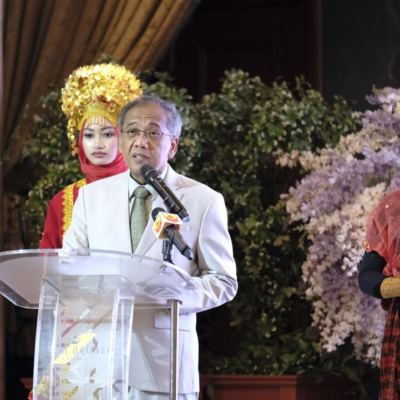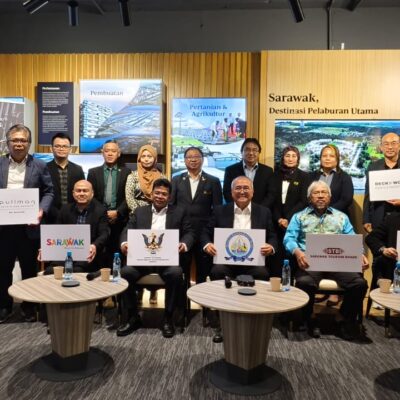by Jia Ying Chia
Housed in the expanse of a renovated former Dutch warehouse and club spot, the Bakul: everyday Baskets exhibition featuring the personal collection of author Jennifer P. Linggi, was a glorious exploration and display of these important items from Bornean indigenous culture. The former curator of the Sabah Art Gallery spend around a decade travelling and staying in remote villages of Sabah, learning and documenting their craft skills including the all-important bakul (basket).
Linggi eventually published a first edition of The Kampung Legacy : A Journal of North Borneo’s Traditional Baskets that debuted in 2017, with her own illustrations and detailed notes on the use and designs of baskets and crafted items across the various tribes in Sabah. Cut to 2023 and visitors to the exhibit were privy to walk amongst an ocean of baskets, fish traps and other woven items, hung at varying heights and positions across the building space and intertwined against a landscape of actual bamboo or rattan plants. Linggi says this was actually a careful consideration by the exhibition curator, Ling Hao, to showcase these daily-use items in the way they would have existed in village life — on the shoulder of a padi harvester, slung across the side of a silent hunter in the forest, of lying in the cool river waters awaiting an unsuspecting fish.
She tells me that there was no big agenda when she began documenting the baskets and only views herself as the supplier of these items for the exhibition, adding that it was a joy to see the positive response from the visitors of varying ages and backgrounds for the GoDown Kl exhibition. “I think people got so excited about it because it was almost like an art installation but of historical artefacts. So there are many layers of meaning … (and) these are the things that are used on a daily basis.”
There’s not much exposure in the West to Southeast-Asian and Bornean craftwork understandably she notes, saying that it would “be nice to just have that recognition” from visitors to Borneo. “More than anything I hope that people recognise that it’s a traditional skill so then they can appreciate it more, and the people who make these items themselves will know their value. Half of what I find is the challenge now is to convince people who make them how precious their skill is and not undersell themselves.”
Linggi has said that after staying in villages of various ethnic communities, she realised that the one common factors was the importance of community spirit. “This was evident during joyful ceremonies. such as those to celebrate the birth of a child or a marriage, and sad occasions related to illness and death. This communal spirit was epitomised by the willingness of the villages to come forward to engage in the exhausting work of planting padi or harvesting rattan for basket-making.”








